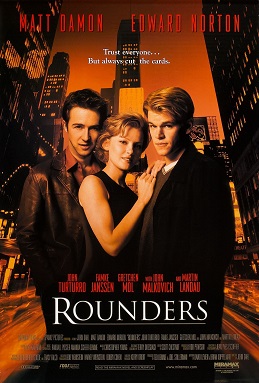The new film The Hate U Give is
based on the 2017 young adult novel by Angie Thomas. The screenplay
by veteran writer Audrey Wells (Shall We Dance?, Under the Tuscan Sun)
effectively shows how the lead character, Starr Carter (Amandla
Stenberg), attempts to keep the two worlds in which she lives
separate, but also how circumstances beyond her control bring those
worlds into conflict.
In this post, we'll look at how the
writer creates strong characters by examining the story through the
lens of the VOTE Method. The point of this analysis is not to
criticize the film or its messages, but to show aspiring writers how
they can create memorable characters in their own stories by using
the VOTE Method, as well as how it can be applied to contemporary
films.
THIS REVIEW CONTAINS SPOILERS
Starr Carter (protagonist)
FIRST HALF
Victory: Starr's Victory is to keep as much separation from her African-American, lower-middle-class home life separate from the white, upper-class world of her private school.
Victory: Starr's Victory is to keep as much separation from her African-American, lower-middle-class home life separate from the white, upper-class world of her private school.
Obstacles: Her primary
Obstacles come from people on both sides of her life. At home, she
must deal with her ex-drug dealer father Maverick (Russell Hornsby),
her overprotective mother Lisa (Regina Hall), and her friend Kenya
(Dominique Fishback). At school, she tries to deal with her friend
and teammate Hailey (Sabrina Carpenter) and her boyfriend Chris (K.J.
Apa).
The biggest Obstacle occurs when her
childhood friend Khalil (Algee Smith) is shot by a white police
officer as he was giving her a ride home from a party. Starr's
neighborhood erupts in protests, led by an activist attorney (Issa
Rae) who urges Starr to come forward as a witness to the shooting.
Tactics: Her primary set
of Tactics come from the creation of a second persona, which she
calls “Starr Version 2”. In a voice-over at school, she describes how
“Starr 2.0” never uses slang and avoids confrontation to keep
from being seen as “ghetto”.
After the news reports on the shooting
and the subsequent protests, Starr tells her school friends that she
doesn't know Khalil.
Energy: Starr gets her
Energy from her desire to satisfy her mother's dream of her going to
college and getting out of the “hood”.
These all hold until near the film's
midpoint, when Starr sees the reactions on both sides to her friend's
death. Her African-American friends and neighbors use the tragedy as
a call to action, while the white kids at her school treat it as an
excuse to cut class.
SECOND HALF
Victory: Starr's
Victories are to see Khalil's killer brought to justice and to speak
for her lost friend.
Obstacles: Starr's
Obstacles come from both sides of the law. On one side, a justice
system that is hesitant to indict a white police officer for shooting
an unarmed young African-American man. On the other side, she has to
face down King (Anthony Mackie), the leader of the neighborhood gang,
who was using Khalil to sell his drug shipments.
At school, she must also deal with
rising resentment among her white classmates, including Hailey, who
maintain that the white officer was justified in the shooting, in
spite of what Starr saw that night.
Tactics: Starr's Tactics
include speaking out anonymously in the media, testifying before a
grand jury, and joining in the protests against police brutality.
At school, she shows Hailey how a
hairbrush can be mistaken for a weapon and forces her into the same
position of fear and terror she felt that night.
Energy: Starr gets her
Energy from her need to honor Khalil's memory and to see justice done
for her friend, her family, and her neighborhood.
The Hate U Give shows how a
protagonist can have an intense desire to achieve a Victory in the
film's first half, then have it flipped in the second half. When your
protagonist learns that they have been chasing the wrong desire
halfway through your story, you can use that moment of revelation as
a turning point for the character, as well as a dramatic hook for
your audience.
=====
If you need help with building strong characters for your script, contact Story Into Screenplay. We offer script coverage reports, rewrite services, and one-on-one consultations. For a list of services and prices, please email storyintoscreenplayblog(at)gmail(dot)com, or send a message to our Facebook page.
=====
Gerald Hanks from Story Into Screenplay will be appearing at the Louisiana Comic Con in Lafayette, Louisiana, on Saturday, October 6, and Sunday, October 7.
Gerald will be presenting two panels:
Concept vs. Character: Where to Start
With Your Comic Book, Novel, or Screenplay
Saturday, October 6th at 12:30PM
The Power of the VOTE: How to Create Strong Characters for Your Comic Book, Novel, or Screenplay
Sunday, October 7th at 1:30PM
Both panels will be in the Second Panel
Room at the Cajundome Convention Center.
Get your advance tickets online or at the Cajundome box office today!

